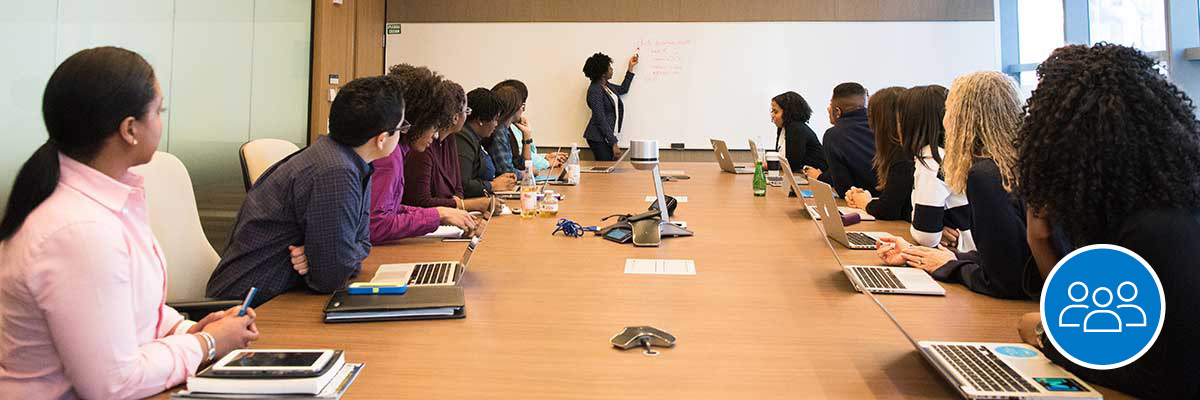Navigating the Future of Work: Tips for Employees

This workshop on Navigating the Future of Work offered as part of our Future of Work learning program provides employees with an overview of hybrid workplace challenges, tools to support collaboration, wellbeing, communication and strategies for creating a productive workspace.
Employees are encouraged to explore tools and gain knowledge to excel in a hybrid work environment, which is an evolving landscape with unique challenges. In this content, employees will discover effective strategies to embrace the changes with confidence.
Challenges of hybrid work and overcoming them
Communication breakdown |
|
|---|---|
Meeting overload |
|
Management and collaboration |
|
Hybrid working and wellbeing
Hybrid employees are more likely to struggle to disconnect from work and experience digital distractions and virtual overload, which can eventually lead to burnout. Be aware of the types of burnout, how to gauge it and ways you can reduce stress.
- Types of burnout
- Deadline burnout: When deadlines are aggressive and met with obstacles so the work to get done is a challenge.
- Passion burnout: When someone's focus becomes overwhelming due to the perfection required.
- Culture burnout: When a group within the company has collectively reached exhaustion.
- Skill burnout: When faced with skill deficiencies in their specific role.
- Personal burnout: Impacts a single individual within the workplace.
- Alignment burnout: Dissonance between what something is and what it's intended to be.
- How to gauge burnout
- Assess how your time is spent and where there are imbalances.
- Ask your colleagues how they’re doing and take the time to listen.
- Create room for your colleagues to speak up about how they feel.
- Reducing stress
- Ask for help or support where needed.
- Practice disconnecting from work after hours.
- Identify optimal scheduling options that could maximize your personal productivity and discuss with your leader.
- Tap into the university’s wellbeing resources.
Hybrid communication through an EDI lens
Determine which hybrid communication strategies will work best for you and your peers, including the right balance between synchronous and asynchronous communication. Without self-awareness, it is easy to lean into our biases through the modes in which we communicate (e.g. sending an email to avoid a difficult conversation). Create opportunities for access and full engagement by understanding the person you are communicating with and identifying the right channel to communicate with them.
Synchronous communication is real-time communication: Phone calls, video conferencing, face-to-face conversations, live instant messaging.
- Ask your colleagues for their preferred method of communication for projects and day-to-day updates.
- Confirm timing is ideal for the other person before fully engaging in synchronous interactions.
- Reserve meetings and calls for in-depth discussions and situations where real-time feedback is important.
- Consider holding meetings all on the same day to allow for meeting-free days.
- Write an agenda for team meetings and circulate it to attendees in advance.
- Take turns writing notes to be shared with team members who couldn’t attend the meeting.
Asynchronous communication: Communication not in real-time: email, delayed messaging, collaboration tools, shared documents, voice and video messaging.
- Embrace over-communication.
- Set reasonable time expectations for responses.
Strategies for optimal daily productivity
- Partner with your leader by identifying optimal tasks to complete virtually vs. in-person.
- Discuss your to-do list with your leader regularly to be aware of new and shifting priorities.
- Arrange virtual coffee/water chats during some of your breaks.
- Where possible, align your schedule to complete deep work in the morning and arrange meetings in the afternoon.